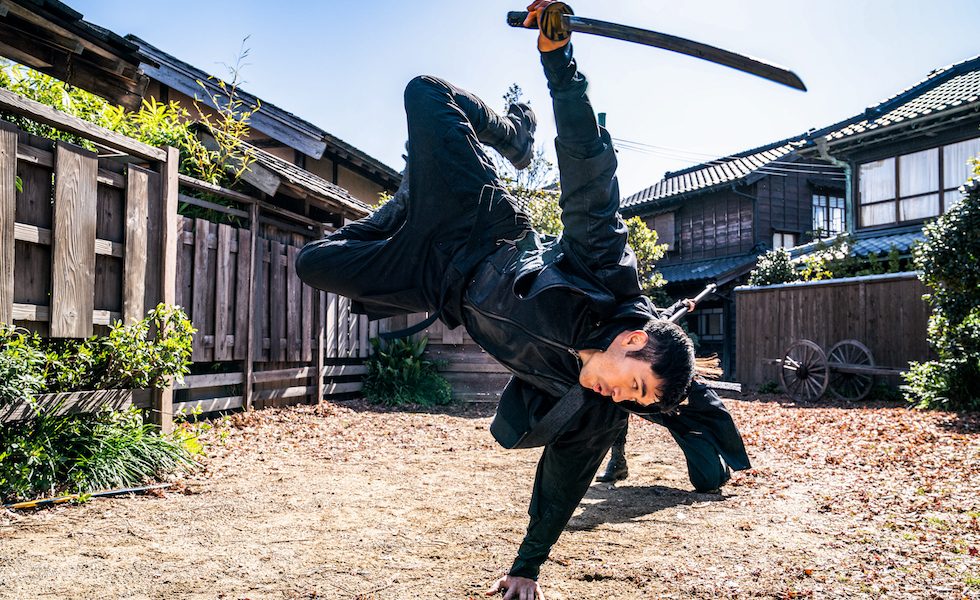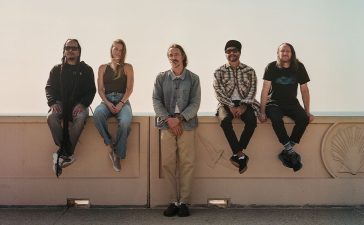Often the greatest creations of our time come from the most humble of beginnings, which, as Larry Hama puts it, can be partially accredited to the assertion that “the best way to be creative is to be working on something that everybody’s not looking at.” With Snake Eyes: G.I. Joe Origins hitting cinemas this week, our film critic Travis Johnson sat down with the comics legend, who once took an unpopular assignment to write a toy tie-in comic and turned it into one of the defining media franchises of the ‘80s: G.I. Joe.
Did you ever imagine, almost 40 years ago when you started doing G.I. Joe, that it would lead to this massive media franchise?
It was always a total surprise. You have to understand that in 1981, toy licensed comics in the comic business were the bottom of the bag. In fact, they paid the lowest rates because the licensing fee came off the top of the page rate. So, none of the superstar artists and writers wanted to work on it because of the pay cut at that time, and there were no royalties, so all you got was less money. The only people they could attract were the B-list and even the C-list.
So when Hasbro came to Marvel and they wanted a comic, the editor-in-chief asked every contract writer if they wanted to do the book and they all turned it down. Then they asked all the non-contact writers and they all turned it down. And then they proceeded to ask all the editors, assistant editors, and the kid that went out for coffee, and even the kid that went out for coffee turned it down!
So, the editor actually started going down the hallway at Marvel, office to office, trying to find somebody to write this book, and my office was the last office in the row. I said, “I’ll do it!” because I’d been drawing comics for 15, 20 years and they would never let me write one. You know, it was a major prejudice of most editors against letting artists write stories and I’ll tell you why: Editors are writers. It’s like picking your own pocket. It’s taking work away from yourself, you know?
And then every artist I knew told me, “Don’t do it. If you take this, a toy book, you’ll never get offered an A-list book from any company ever again, because you’ll have classified yourself as, you know, D-list.” But I wanted to have the experience and start writing. And we just never figured that it would last. Toy books at that point never lasted more than a year or two. And in fact, toy lines were expected to only last three years. So yeah, as a roundabout way of answering the question, not only did we have no idea if it would be around that 40 years, but we were dead certain it was going to be gone in a year and a half.
But does that mean that you were kind of left to your own devices? You had the toys to work from, the original 11 figures, but the rest was up to you.
Well, yeah, the best way to be creative is to be working on something that everybody’s not looking at. They left me alone for a number of reasons: one, it’s a toy book, and two, it was a genre that none of the other people at Marvel were interested in. But all that rapidly changed when the sales started going through the roof for both G.I. Joe and Transformers – that was the other book that really broke the mold. And simultaneously with the sales skyrocketing, Marvel and DC instituted the royalty program. So, all of a sudden, we were making a lot of money because of the volume of sales and, all of a sudden, the A-list people were no longer negative about doing toy books.
One thing I always loved about G.I. Joe was the tension and the contrast between the technical detail, the accuracy of the military elements and the martial arts, and the fantastical elements. Can you expand on why that was important to you as a writer?
Well, I have a lot of varied interests, and even though I was a veteran by the time G.I. Joe came along, I had been out of the service for almost 20 years. And at that time, just about everything had changed: uniforms, what they call the S.O.P. [Standard Operating Procedure], and all these things. What I did know intrinsically from my own experience was the mindset of the average grunt, and how soldiers think, and how soldiers feel, and how soldiers relate to themselves, and what soldiers will tell non-soldiers, and what they won’t. But the rest of this stuff, the technical stuff, I had to go look up. This was before the internet, so I had to haunt all these military bookstores and got to know a lot of pretty interesting people.
G.I. Joe obviously has a sprawling cast of characters because they kept making more toys, but Snake Eyes is far and away the most popular character. What is it about this guy, who was largely anonymous when he was first introduced?
Part of the original popularity was that when you stop to think about it, you don’t know what he looks like, you know? It could be anybody. It could be you. No matter what you look like. There’s no specificity. Like, Duke looked a certain way and if you didn’t look like that, it was very hard to identify with him. But this mysterious character who didn’t even speak? You could be him. I saw the potential: this guy’s all in black, he’s mysterious – let’s play with that to the hilt.
You made him a ninja, right? Originally in the toy line he was described as a commando, but you introduced the ninja elements.
I made him a ninja in issue 26. Well, really 26; in issue 21 he didn’t even have a story yet, but 21 is the silent issue where Storm Shadow’s introduced. Here’s the thing: I write, all the stories literally page by page. So, I don’t know what’s on page three until I get to page two. And the reason I did a silent issue was that we somehow fell behind schedule and had to knock out an entire book in three weeks starting from nothing. And I said, “Well, look, if there’s no lettering, no dialogue, that saves two weeks, you know?” And if I write it and draw it at the same time I can feed pages to Steve Leialoha and he can finish them as I’m working on them. And we got the book out in two and a half, three weeks, which is pretty much a record.
But I got halfway through the book and Snake Eyes and Storm Shadow are having a fight and both of them tear their right sleeves. I get to the next page and I’m thinking, “Well, what do I do? I can do something with that.” I thought, “Well, what if I give them the same tattoo?” And so, I chose a hexagram from the I-Ching, which is number 66: “After completion.” I had no idea why both characters had that tattoo. People think I had this all planned out before, but five issues later, I’m sitting there doing the origin of Snake Eyes and I think, “Well, what if it’s the symbol of a Ninja clan?” And I worked backwards from there.
You’ve seen the new film – what do you think of it?
I really loved it. First of all, Henry Golding’s a really terrific actor and Andrew Koji is another terrific actor. Lots of times you see these action movies and they’ve just got guys that can throw punches and something’s always sorely lacking in their thespian abilities. It really makes a difference to have a solid actor nailing down these major characters. And the fact that they brought in this top Japanese sword fight choreographer, Kenji Tanigaki, who did all the sword fights for all the Rurouni Kenshin movies which, if you’ve seen them, those fights are really over the top and amazing.
You’re still writing the comic G.I. Joe: A Real American Hero, only now for IDW Publishing, and it’s up to over 250 issues. In the first IDW issue, over 10 years ago, you have a domestic militia mounting an attack on the U.S. Capitol and swiftly being put down which, in 2021, reads very differently. Do you have a Nostradamus thing going on?
(Laughs). Well, you know, I also had storylines that took place in Iraq, you know? And I had storylines in the Middle East and the Balkan states – Borovia stands in for that hotly contested area. But that’s the thing: it’s not magical. It’s just falling into the zeitgeist. You’re writing about conflict in certain sorts of areas and boom, it’s going to happen sooner or later.






